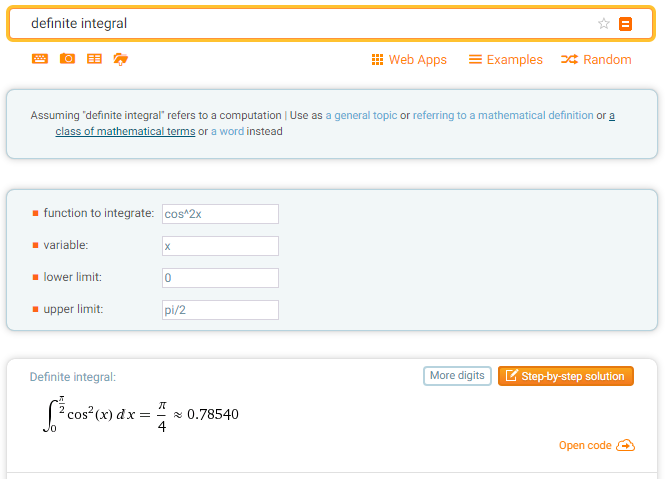Or of any celestial body. Here I discuss a solution that can be explained to high school students, to get them interested in mathematics, statistics and probabilities. A few interesting related problems further enhance the pedagogical value of this discussion.
I stumbled upon this kind of problems when learning advanced mathematics in my postgraduate studies, in a course entitled stochastic geometry. Just formulating the problem required advanced knowledge of sophisticated measure theory and stochastic spatial processes in some special mathematical spaces. The lessons were very theoretical, focusing on highly abstract and generic mathematical settings. This removed much of the fun of this otherwise very exciting field full of mysterious and remarkable results.
Here I take a radically opposite path, proving that these concepts can be introduced to high school students, without rigorous definitions, without even a basic knowledge of the concept of probability or random variable. The purpose is to get them challenged and interested, maybe hoping a few of them will become data scientists or mathematicians.
Average Rotational Speed of Earth
So here is the “high school” solution to this problem. Here we are talking about the speed for a location on the surface of Earth. The rotation is around Earth’s polar axis.
Earth being a sphere, it has plenty of symmetries, and all we need to do is to compute the rotational speed of one point for each latitude, weight these points appropriately, and compute a weighted average across the latitudes. Since there are more points located at the equator than at the 45 degrees latitude, one would expect the weight at the equator to be the largest.
Let x be the angle specifying the latitude: from 0 at the equator, to p/2 at the North pole. The solution will be a weighted average with the following features:
- x being a continuous variable, we are dealing with an integral rather than a sum
- Lower bound is x = 0, upper bound is x = p/2
- Let w(x) be the weight attached to x, and L(x) be the length of the circle, parallel to the equator, and containing x
Let’s also define:
- R = radius of Earth
- T = one day (our time unit)
At the equator, the speed is of course 2pR/T. At x, the speed is L(x)/T. The average speed is
v = (1/T) x Int{ L(x) w(x) } / Int{ w(x) }
where the integral Int is between 0 and p/2.
Here, an heuristic but rudimentary argument (I call it intuition) shows that w(x) is equal to L(x). The computation of L(x) is straightforward, requiring basic trigonometry only:
L(x) = 2pR cos x.
Combining all the pieces together, we obtain the following formula for the average rotational speed of Earth:
For writing the above mathematical formula, I used an online mathematical editor known as HostMath, entered the formula, took a screenshot and saved it as an image, then inserted it in this article as an image.
The computation of the integrals involved is also straightforward (high school grade) and can even be performed online using the WolphramAlpha tool. Below is a screenshot:
Interesting related facts and problems
Now that we have computed the formula, it is easy to find that
- A plane flies faster than the Earth is rotating, when circling close to the North pole, but not as fast as Earth when circling near the equator. At which latitude are both speeds identical?
- At which latitude does a point on Earth’s surface rotate (along Earth’s axis) at the speed of sound?
- Pick up a random location on Earth’s surface. What is the expected distance covered in one day, circling around Earth’s polar axis? Solution: This is the same problem but formulated in a different way.
- The average speed is equal to p/4 times the speed at the equator.
- Potential classroom experiment: Pick up n locations randomly distributed on Earth’s surface, compute the speed at each location, then average these speeds. Does the average speed converge to the theoretical result as n tends to infinity? This experiment can be done using Monte-Carlo simulations on a computer. However, to generate random points on a sphere, read this tutorial. The problem is more complicated than it seems at first glance.
Top DSC Resources
- Article: Difference between Machine Learning, Data Science, AI, Deep Learnin…
- Article: What is Data Science? 24 Fundamental Articles Answering This Question
- Article: Hitchhiker’s Guide to Data Science, Machine Learning, R, Python
- Tutorial: Data Science Cheat Sheet
- Tutorial: How to Become a Data Scientist – On Your Own
- Tutorial: State-of-the-Art Machine Learning Automation with HDT
- Categories: Data Science – Machine Learning – AI – IoT – Deep Learning
- Tools: Hadoop – DataViZ – Python – R – SQL – Excel
- Techniques: Clustering – Regression – SVM – Neural Nets – Ensembles – Decision Trees
- Links: Cheat Sheets – Books – Events – Webinars – Tutorials – Training – News – Jobs
- Links: Announcements – Salary Surveys – Data Sets – Certification – RSS Feeds – About Us
- Newsletter: Sign-up – Past Editions – Members-Only Section – Content Search – For Bloggers
- DSC on: Ning – Twitter – LinkedIn – Facebook – GooglePlus
Follow us on Twitter: @DataScienceCtrl | @AnalyticBridge


